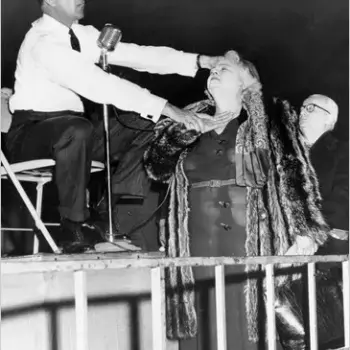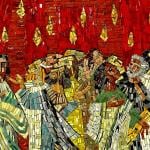It started 15 years ago with plans to expand the Tower of David Museum. But the story took a strange turn when archaeologists started peeling away layers under the floor in an old abandoned building adjacent to the museum in Jerusalem’s Old City.
They knew it had been used as a prison when the Ottoman Turks and then the British ruled these parts. But, as they carefully dug down, they eventually uncovered something extraordinary: the suspected remains of the palace where one of the more famous scenes of the New Testament may have taken place — the trial of Jesus. . . .
For Re’em, the building has yielded a trove of thrilling discoveries from across the centuries — symbols etched into old jail walls by prisoners from the Jewish resistance fighting to create the state of Israel in the 1940s, fabric-dyeing basins from the era of the Crusades and the foundation walls and an underground sewage system that probably underpinned the sprawling palace built by Herod the Great, the eccentric king of Judea under the Roman empire.
But for the more than 1 million Christian pilgrims who visit Jerusalem each year, the site is especially significant because it could have been an important place in the life of Jesus. . . .
Today, many Christian pilgrims to Jerusalem walk the Stations of the Cross, or Via Dolorosa, taking them from where it is believed Roman procurator Pontius Pilate held the trial and sentenced Jesus to death, to where Jesus was eventually crucified and buried.
Harani said that since pilgrims started making their way to Jerusalem centuries ago, the route of the Via Dolorosa has changed several times, depending on who ruled the city at the time and what they deemed important.
In the Byzantine period, for example, the Via Dolorosa began closer to the area where the museum now sits in the western part of the city. It was only after the 13th century that the starting point moved to the Antonia Fortress, the site of a former Roman military barracks, which today sits beneath a school close to the al-Aqsa mosque and the golden Dome of the Rock.
The debate over the site of the trial continues among Christian spiritual leaders, historians and archaeologists. Questions about the location stem from various interpretations of the Gospels, which describe how Jesus of Nazareth was brought before Pilate in the “praetorium,” a Latin term for a general’s tent within a Roman encampment. Some say Pilate’s praetorium would have been in the military barracks, others say the Roman general would probably have been a guest in the palace built by Herod.
Today, historians and archaeologists are certain that Herod’s palace was on the city’s western side, where the Tower of David Museum and the Ottoman-era prison stand.
For Shimon Gibson, an archaeology professor at the University of North Carolina at Charlotte, there is little doubt that the trial occurred somewhere within Herod’s palace compound. In the Gospel of John, the trial is described as taking place near a gate and on a bumpy stone pavement — details that fit with previous archaeological findings near the prison, he said.
“There is, of course, no inscription stating it happened here, but everything — archaeological, historical and gospel accounts — all falls into place and makes sense,” Gibson said.












